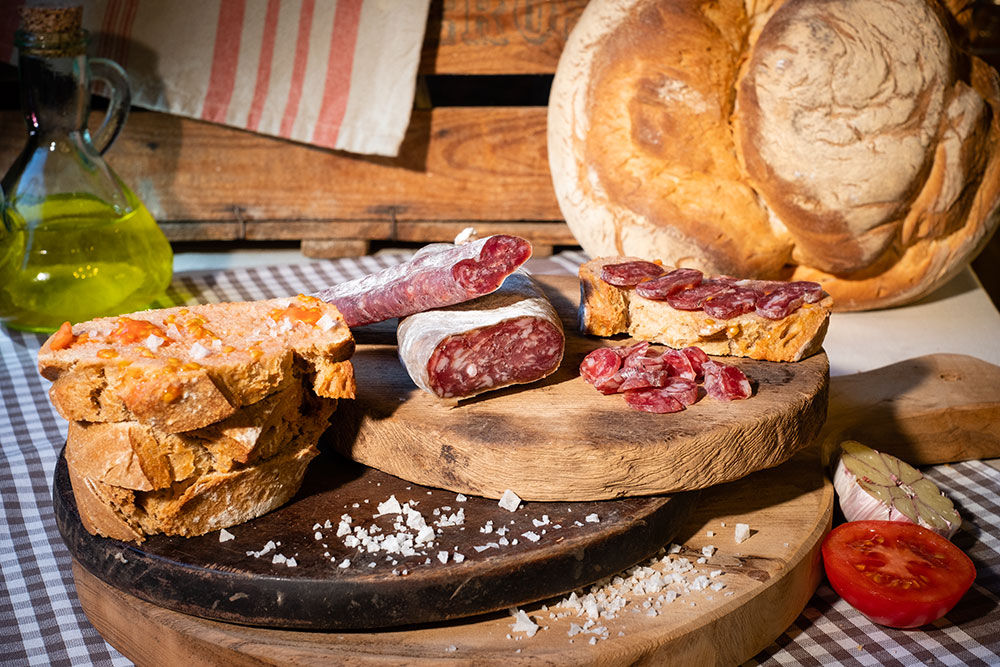Andorran gastronomy







Andorran cuisine is heir to a centuries-old tradition linked to the aromas and flavours of the mountains, which has always been based on local produce and seasonal products cooked depending on the season and traditionally characterised by self-sufficiency. With the passing of time, our gastronomy has also been influenced by and assimilated French and Catalan cuisines.
Receptari de Gastronomia Andorrana
To preserve this aspect of the Principality’s identity, the Receptari de Gastronomia Andorrana (Recipe Book of Andorran Gastronomy) was created, which includes about thirty traditional recipes. This recipe book is the result of extensive and wide-ranging historical and scientific research, the Corpus del patrimoni culinari del Principat (Corpus of the Culinary Heritage of the Principality), which is comprised of more than 400 dishes. This is a collection of selected recipes that form part of the living culinary heritage of Andorra.
Traditional Andorran Cuisine seal
At the same time, reinforcing the country’s culinary identity and what makes it special, the Government has created the ‘Traditional Andorran Cuisine’ seal. The badge is for restaurants that include on their menus dishes and drinks prepared according to the traditional recipes of Andorra’s living gastronomic heritage, and that work with agricultural products and artisans from the land or nearby. The establishments that currently have the seal are the restaurants of the Isard, Abba Ordino Babot and Termes Carlemany hotels, together with the Minim’s, Can Manel and Borda de l'Avi restaurants.
Traditional bordes
Traditional gastronomy is also preserved in high-mountain houses popularly known as bordes. Formerly used to store grain and shelter cattle, they’ve been transformed into restaurants. In these architecturally unique spaces, you can enjoy the country’s most traditional typical dishes and specialities. Discover Andorra morsel by morsel at some of our traditional bordes!
Traditional Andorran food
Escudella is a light pork stew with seasonal vegetables. A traditional dish typically served during winter and at popular events. At Christmas, you can try the dish with a traditional type of pasta, called sopa de galets or sopa grossa.
Trinxat de montanya is a typical Pyrenees dish made with winter cabbage, potatoes, garlic and tocino.
Andorran cannelloni are a variant of the Catalan recipe featuring a mix of minced lamb, pork and chicken inside pasta rolls and served with bechamel sauce.
Game dishes such as jugged hare or wild boar stewed in red wine are popular at the beginning of the hunting season and are typically served with vegetables and wild mushrooms. With the onset of the fishing season, you can sample pan-fried trout with almonds and cured ham known as Trucha a la Andorrana.
Cod used to be eaten as a main course like herring or eel, types of fish that reached mountain areas thanks to salting techniques. Nowadays you can try Andorra's most traditional cod dish, cod au gratin with aioli (garlic and olive oil) sauce.
Wild mushrooms such as the boletus, the saffron milk cap, the grey knight, the common morel or the Scotch bonnet are the most common varieties. You will find them in creams, rice dishes, sauces and accompanying meat dishes of every kind.
Codony Aioli is a quince, olive oil and garlic-based sauce that typically accompanies grilled meats and is highly regarded sauce in mountain cuisine.
Charcuterie is produced during the traditional pig slaughter at the beginning of January in the form of cured meats such as bringuera, donja, bisbe, longanizas and morcillas.
Common chicory or dandy lion is picked wild on the mountainside and is an excellent variant for salads. It is typically seasoned with tocino and nuts, and is only served in spring.
Caracoles a la llauna, consists of snails that are usually grilled over charcoal and seasoned with a variety of spices. Typically accompanied with quince aioli, this delicacy will satisfy the most exigent palates.
